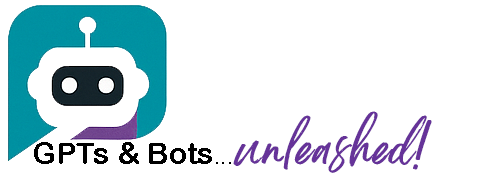Bots Vs GPTs (no they are NOT the same!)

Introduction: Same-Same… But Totally Different
If you’ve been hanging around the AI space for even five minutes, you’ve probably noticed something: people toss around the words “bot” and “GPT” like they’re interchangeable. Spoiler: they’re not.
It’s like calling your toaster an oven. Sure, both make things hot, but one is going to give you golden-brown toast and the other is baking a three-layer cake. You can’t just lump them together.
So let’s set the record straight, once and for all. In this article, we’re going to break down:
-
What a bot actually is (and why it’s more powerful than most people realize).
-
What a GPT really means (and why OpenAI made the term a household name).
-
The key differences between bots and GPTs.
-
When you should use one vs the other.
-
And most importantly: how to use both to grow your business without losing your sanity.
By the end, you’ll be able to explain the difference so clearly that even your grandma will nod and say, “Ohhh, that makes sense.”
Part One: What the Heck is a GPT?
Let’s start with the hot celebrity in the room: GPT.
GPT = Generative Pre-trained Transformer
It sounds fancy, but here’s the easy breakdown:
-
Generative: It creates things—words, code, even poetry about llamas if you ask.
-
Pre-trained: It’s already been fed a buffet of internet text, books, and data to “learn” patterns in language.
-
Transformer: This is the architecture behind the magic. Think of it like the brain wiring that allows it to process input and spit out coherent output.
In practical terms, GPT is a language model. You talk to it (via prompts), it talks back (via outputs).
What GPTs Can Do for You
-
Draft content (emails, blog posts, captions).
-
Answer questions like an uber-knowledgeable assistant.
-
Generate code snippets or debug issues.
-
Brainstorm ideas or structure plans.
Limitations of GPTs
Here’s the catch: GPTs live inside platforms like ChatGPT or API integrations. On their own, they don’t “do” anything in the real world. They can’t automate your Instagram, book your appointments, or file your receipts unless… someone builds that bridge for them.
That’s where bots strut onto the stage.
Part Two: So What’s a Bot?
If GPT is the brain, a bot is the body that gets stuff done.
Definition of a Bot
A bot is a software program that performs automated tasks. Unlike GPTs (which respond to prompts), bots can act inside your digital ecosystem. They don’t just “talk”—they “do.”
Think of bots as little digital employees:
-
They follow workflows.
-
They connect to apps and platforms.
-
They run on autopilot once you’ve set them up.
What Bots Can Do for You
-
Automation: Schedule social media, send email sequences, update spreadsheets.
-
Integration: Talk to multiple platforms (Zapier-style) and keep your systems humming.
-
Execution: Not just giving ideas, but actually clicking the buttons, sending the files, posting the posts.
A bot is like hiring a VA (Virtual Assistant), except it works 24/7, doesn’t call in sick, and won’t ask you to pay for coffee.
Part Three: Key Differences Between Bots and GPTs
Let’s break it down side by side.
| Feature | GPT | Bot |
|---|---|---|
| Core Function | Generates text, answers, or ideas | Executes tasks, automates workflows |
| Strengths | Language, creativity, brainstorming | Action-taking, system integration |
| Lives Where | Inside OpenAI (ChatGPT, API, custom GPTs) | On your site, apps, automation platforms |
| User Input | Needs prompts every time | Runs automatically after setup |
| Best Use Case | Ideation, content, customer chat | Scheduling, posting, process automation |
| Think Of It As | The “brain” | The “hands and feet” |
So yes, they can complement each other—but they are not the same thing.
Part Four: Why People Confuse Them
-
Chatbots vs GPT confusion: A chatbot can run on GPT, but not all chatbots use GPT. (It’s like all squares are rectangles, but not all rectangles are squares.)
-
Marketing hype: People love buzzwords. Slap “GPT” or “bot” in a product name and suddenly it sounds futuristic.
-
They can overlap: Many bots now integrate GPTs inside them—so you end up with a bot powered by GPT. That’s where the magic really happens.
Part Five: Real-World Examples
Example 1: A GPT in Action
You open ChatGPT and type:
“Write me a 500-word blog post about eco-friendly candles.”
Boom—GPT gives you a draft.
But then… you still have to:
-
Upload it to your blog.
-
Format the post.
-
Create graphics.
-
Share on social media.
That’s manual work. GPT didn’t “do” those steps.
Example 2: A Bot in Action
You set up a content bot that:
-
Pulls your draft from GPT.
-
Formats it into a blog template.
-
Creates a matching graphic in Canva.
-
Posts to your WordPress site.
-
Shares it across your social channels.
Now we’re talking automation.
Example 3: The Dynamic Duo
Pair GPT + Bot together and you get… chef’s kiss.
-
GPT generates captions.
-
Bot schedules them in Buffer.
-
GPT drafts your email.
-
Bot sends it through your ESP.
Together, they’re unstoppable.
Part Six: Which One Should You Use?
The answer: both—just in different ways.
-
Use GPTs when you need brainpower: ideas, drafts, strategy.
-
Use bots when you need grunt work handled: tasks, execution, follow-through.
Trying to run a business on GPT alone is like hiring a genius consultant who never touches a spreadsheet. Relying only on bots is like hiring a great admin who doesn’t think creatively. Combine the two and you’ve got an unstoppable team.
Part Seven: Future Trends
-
Hybrid Tools: More bots are going to have GPT brains built in. (Think: smart assistants that don’t just post content but actually write it, too.)
-
Customization: Businesses will build their own GPTs trained on their brand voice, then plug them into bots.
-
Everyday AI: Soon, you won’t even realize you’re using GPTs or bots—they’ll just be baked into every platform you touch.
Conclusion: Stop Mixing Them Up (Your Business Deserves Better)
Here’s the truth: bots and GPTs are both powerful, but they’re not twins. One gives you brains, the other gives you brawn. One helps you think, the other helps you do.
When you use them together, you’re not just “keeping up with AI”—you’re creating a lean, mean, automated-and-fabulous machine that grows your business without eating up your time.
So next time someone casually says, “Oh yeah, I have a bot—it’s like ChatGPT,” you can smile, sip your coffee, and politely (or sassily) explain:
“Not exactly… GPTs talk. Bots do. The real power? When they team up.”
And that, my friend, is how you go from confused to Nimble AF.






Hello Sharon & Melody, I saw a YouTube Video this week “The Rise of AI for Creators Over 50” by The Modern Midas and I’m not sure how I found you however, I am happy I did! I’m 54 years old and I work as a Patient outreach specialist for an organization that deals with Dementia care (this is my fulltime job) but, I have attached the link to my Shopify store Where I sell digital PDFs, anywho, I am so intrigued by what you both are doing and also, interested in buying these bots to help in my own business and blog and in addition to that I see that you offer PLR rights to the bots.
My question is would I be able to package and resell the bots in my own store and if so, are you available on other social media platforms that I can ask questions or get help? Please advise.
Thank you in advance,
Michelle Rapley
Email:pdfpinnaclepro@gmail.com
My Store: https://pdfpinnacle.com
Absolutely! All of our Bots, GPTs and (coming soon_ Apps come with full PLR so you can sell these as your own products!